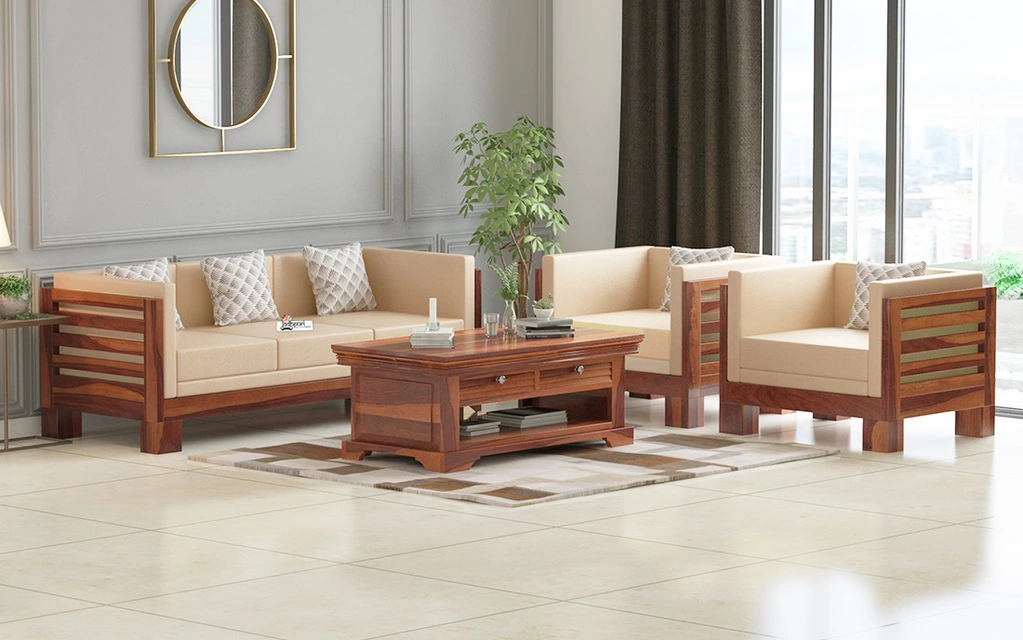Furniture plays an important role since the stone age. We have a question in our mind if there was a past for furniture then there must be a furniture future. The future of furniture is actually a doubtful question in your mind. As long as we’ve been living in permanent residence, we’ve been making our furniture in some forms making furniture in form. In that time we’ve gone from using stone and wood to plastics and carbon fiber with hypoallergenic microfiber cushions.
Furniture design has been essentially dictated by the style for years.
For encouraging furniture-related projects, we suggest checking out these great books on Amazon.
- Great Book on Woodworking Projects.
- Making Furniture Masterpieces.
- Making Furniture: Projects & Plans
and more…
As we become gradually more trapped in the internet of things, the function is going to become increasingly important. What can you expect in the years to come? What do experts expect in furniture’s future?
Furniture is already helping keep us connected. This is perhaps most evident in trade shows and events. Attendees always have their devices on, both to work and update social media. Charging stations became popular out of this trend. The problem is, people don’t want to stand in one place and charge their devices. So we incorporated power outlets into the design of furniture, a continuously evolving trend. In July, we’re launching a comfortable tech tablet chair for stadium seating.
It has a small footprint and is complete with AC and USB charging outlets, a retractable desk, and a secure place for a laptop bag, allowing attendees to seamlessly stay connected and charge up during a session. As the demand for technology grows and technology itself evolves, furniture will evolve too. While trends in events historically reflect trends already seen in home furnishings, the opposite may prove true when it comes to technology.”
Kevin Dana, Director of Marketing and Product Development at CORT Trade Show & Event Furnishings
Furnishing pieces from today’s leading designers will become collectibles, like the works of Patricia Urquiola, Marcel Wanders, and Ron Arad. They are set to join the ranks of Le Corbusier and the Eames. Retail stores will vanish and every consumer will be able to customize their furniture. Easy-to-use tools on vendor websites will enable consumers to plan their rooms, placing the furniture easily into a design plan, and finished samples will be mailed directly to the consumer’s space. This is already happening on several sites, but it will be mainstream. That will also affect the profession of interior designers.
More modular pieces will be designed that are easy to move and customize as needed. Things such as expandable tables, sectional pieces, stackable chairs, storage beds, etc. Space is limited and people are moving more from one place to the other.”
Sharon Blaustein, Founder and Principal Designer at B Interior
Furniture of the future are pieces that support our lifestyle, as opposed to merely looking pretty or conforming to how we traditionally think space or item should serve us. We are the ultimate multi-taskers, so I foresee, and am creating myself, works that merge dining, lounging, watching TV, works, etc., in the same great room instead of dividing tasks into several different rooms. It’s the same thing with office furnishings; we desire pieces that combine work and relaxation as we need them.
A couple of my furniture creations that exemplify this are the Dovetail Barback Console, designed to back a sofa for displaying accessories or as an added level of seating. A central wood panel doubles as a serving tray when flipped over.”
Bea Pila, Founder, and Principal at B. Pila Design Studio
Furniture is no longer a lifetime purchase. Furniture, now more than ever, is thought of the flexible now. Do I like the style now? Does it fit my space now? How easily can I purchase it now? And how flexible is this if my style changes or if I move? The future only holds more of this type of thinking.
As a result of what we believe to be the future of furniture, we have developed a molded furniture frame that requires no upholstering and that is made here in the USA. Covers can be changed as styles evolve, it is smaller in scale to fit smaller spaces, and on average it is only 15 lbs. making it easily shipped and moved.”
Matt Jung, President, and Co-founder of Comfort Research
For thousands of years, the evolution of furniture design has largely been guided by style. However, in the next couple of years, a critical new function will be added to the table and chair’s primary dining utility. That function, perhaps surprisingly, is powering our electronic devices. Our use of these devices is increasing at unimaginable rates and as a result, unsightly, inconvenient power cords abound.
Today, the technology exists to embed in our furniture, simple, low-cost antennae that use harmless magnetic fields to directly and simultaneously power everyday electronic devices like lamps, televisions, cell phones, and computers without wires. The furniture itself will be our source of power, enabling us to enjoy our myriad and growing device use to our heart’s content.”
Alex Lidow, CEO of Efficient Power Conversion (EPC)
I think the future of furniture will be in the ability for itself to replace itself. So once a mattress or a couch is worn down, it will be able to replace itself to keep your comfort at the highest possible place. Various sensors can be installed, and then hooked up to the internet in low profile ways, that will alert a manufacturer to either send you a replacement or to reach out to see if you’d like something else.”
Nenad Cuk, Co-founder, and CEO of CroatiaTech




